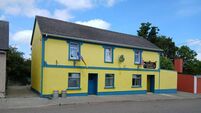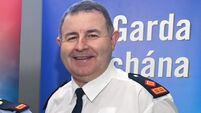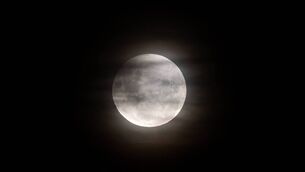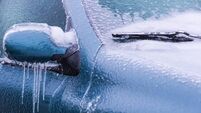Clodagh Finn: Join me for a drive through the Ireland I am longing to see again
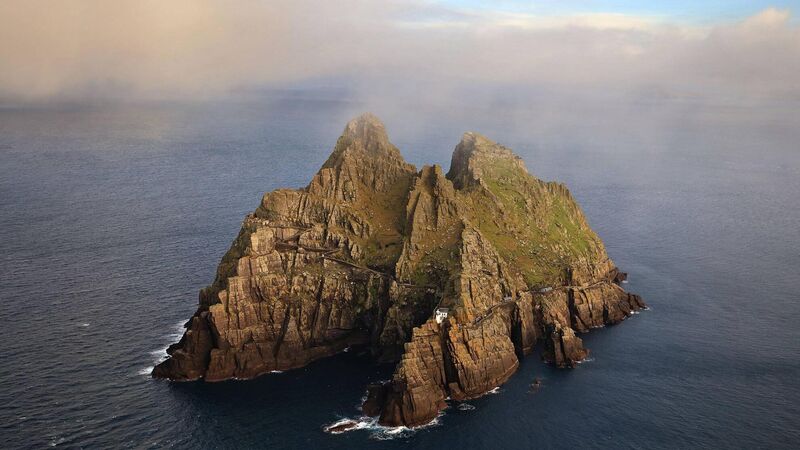
On our descent into Dingle we might pull over to take in a vista that, on a good day, could range from the Skelligs, above, to Loop Head in Co Clare and even the Aran Islands. Picture: Valerie O’Sullivan
I’m headed west, if you’d like to come along for the drive. It’s not too late. There’s space in the back, just hop in.
We’ll be over the bridge at Blennerville on the road to Dingle before you know it. On the left, the Slieve Mish mountains look glorious. Anybody fancy putting a fiver on the colour(s) they might turn as we venture on?
The last time I drove this way — in real life — I was struck by the buttery yellow light sweeping over the entire range, turning the mountains purple as it went. It was as if a child had been at work with crayons.
This time, alas, I’m going to Kerry in my mind, to misquote James Taylor, who wrote so lyrically about that feeling of being called away to another place in 'Carolina In My Mind'. That will strike a universal note now as so many of us are far away from our special places, wherever they might be. I’m city-bound, but am dreaming of a trip out along the Dingle Peninsula.

Yes, it has come to that.
A second Easter in lockdown, confined to our 5km barracks, has simply sharpened the longing. It feels like a kind of exile-lite not to be able to visit the places that formed us, nourished us, and provided the backdrop for childhood memories built up over decades.
And yet, what has surprised me is how vivid and how satisfying it can be to embark on an epic road trip without leaving the Covid-compliant confines of your own home.
We can, if you like, turn off and take a closer look along the expanse of Derrymore Strand but you won’t find me casting a clout till May is out.
The dryrobes and wild swimming can wait. Besides, it’s the scairbhín — that hungry time of year named more fully garbh shíon na gCuach (rough weather of the cuckoo) which describes the unpredictable icy weather that heralds the arrival of that bird.

Instead, I’ll settle for the view. Tralee Bay looks magnificent in this light, and there’s Fenit lighthouse in the distance. We sailed around it one year and landed briefly on its outer rim. I remember being eaten alive by ants and burnt to a crisp by the summer sun. I’d suffer both discomforts again just to be out on the open sea.
You have to wonder about the long-term impact of keeping people apart and denying them the right to visit those places that are marrow-deep within them.

At least we can visit them virtually, or on paper, or in our minds. Stop daydreaming now, though, as we are just approaching the Conor Pass and this narrow, winding road hewn out of the mountain demands all of your attention.
I have hard-boiled sweets in the glove compartment — clove rocks and pineapple chunks — to chew on if your ears start popping. Don’t worry if you feel a bit carsick because we’ll pull in at the waterfall and scramble up the rocky path to Lough Doon, the glacial corrie lake we have always known as Pedlar’s Lake.
According to one account, a smuggler turned pedlar was tracked to this place by his jealous comrades who cut his pack of wares from his back and flung him backwards into the lake, a “deep, dark pool, sunk like a cup in the top of the mountain”.
They went on to sell the pedlar’s stolen goods locally in Annascaul, but were rumbled when the pedlar’s girlfriend saw there was a broken sixpence among them. She produced the other half of the sixpence, which had been given to her as a love token by the murdered pedlar, and the crime came to light.
That lake has featured in stories, real and imagined, for decades but this place — Conor Pass, or Connor Hill — once described by writer CJ Hamilton in the late 1890s as “a land of stones invested with some ghastly secret” has nothing gloomy or foreboding about it today.
The descent from the pass into Dingle town “can feel more like landing a light aircraft than driving”, according to the wonderful dingle-peninsula.ie website.
It certainly can.
In one direction, you might see as far as Loop Head in Co Clare or even the Aran Islands on a good day. In the other, feast your eyes on Dingle Bay, the Skelligs, and the Iveragh peninsula.

Fungi might not be here any more, but there is reason to hope new visitors will come. In , TJ Barrington recounts that no fewer than 63 pilot whales turned up in nearby Cloghane on that townland’s pattern day in late July in 1965. We’re due another school visit.
And, speaking of discovering, here’s hoping the wonders of all that lies outside the capital will be introduced to new generations under the Government’s ambitious plan to transform rural Ireland.
The five-year Our Rural Future strategy hits all the right notes. It talks of attracting remote workers to rural communities, boosting town centres, generating rural jobs, adventure tourism, and island development.
It will hinge on rural broadband and, of course, funding which has not yet been announced. But it does give us reason to hope that those places in our towns and villages that are boarded up now might not just reopen but thrive at some point in a decentralised future.
It’s a thought to keep in mind as we drive on through Dingle. This wonderful place will be heaving again and we’ll be in the midst of it.

For now, though, let’s journey on and take a different route home.
We’ll pass Annascaul, home of Antarctic explorer Tom Crean, and stop briefly at Inch beach, a sand spit that looks like a bony finger pointing out into the middle of Dingle Bay.
It’s nearly always windy here. We’ll set down on the firm, ridged sand, and take a gallop along some, or all, of its 3km.

Back in the car, as you warm yourself and finish off the boiled sweets, I’ll drive on and point out Caherconree mountain, where King of Munster Cú Roí Mac Dáire once lived in his mythical mist-encircled fortress and fought Cuchulainn to the death over a woman, Blaithnaid.
To the left, there’s the jasmine-filled valley of Gleannagalt, the place where the Mad Sweeney of legend found a cure for his battle-madness by drinking the well water. In 2012, chemical analysis of that very water showed it contained high levels of lithium, a medicine used to help mood disorders.
Whatever you need to do to lift your mood now, do it. Because we need all our strength to get us through what Micheál Martin has described as “the final stretch”.
And yes, I want to ask too: Are we nearly there yet?
Here’s hoping the wonders of all that lies outside the capital will be introduced to new generations.





